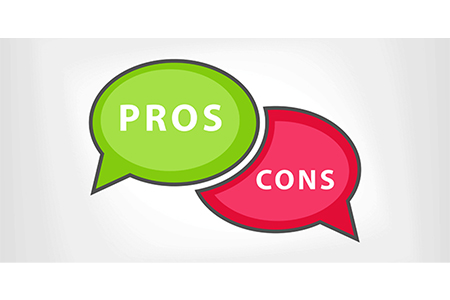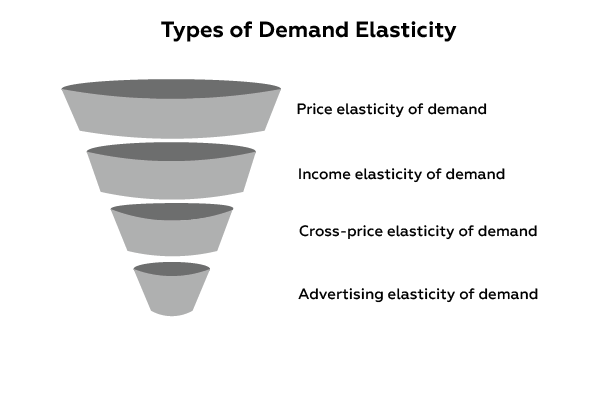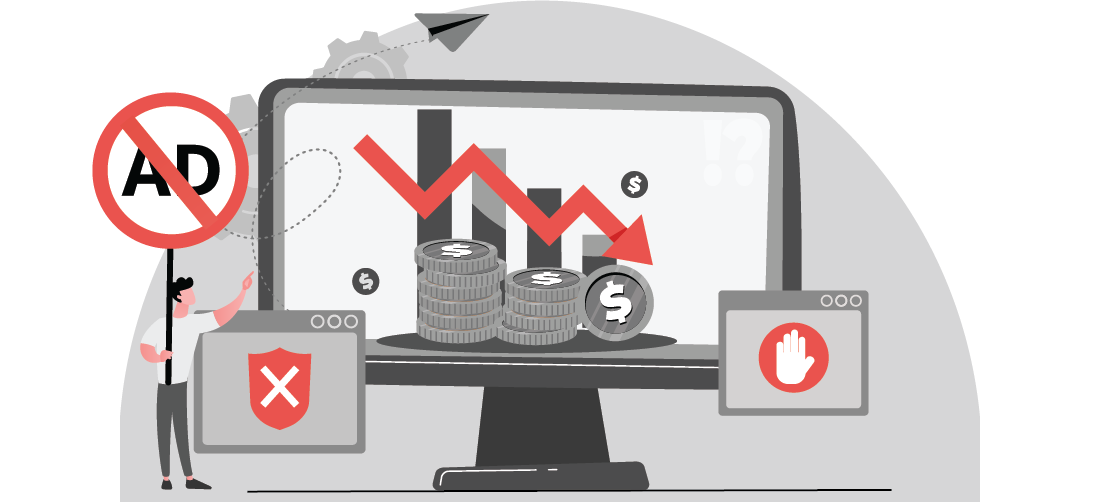
You’ve probably asked yourself this before: “Is all this advertising really helping me sell more?” You’re not alone. Whether you run a growing startup or manage a big brand, it’s a question that never goes away.
Advertising can feel like a gamble. You put money into it and hope people respond. But what if there was a way to know how much sales would actually rise if you spent more on ads? That’s where advertising elasticity of demand steps in. It shows how much consumer demand shifts when you change your ad spend. In simple words, it tells you if your advertising is actually working or just making noise.
Let’s walk through what is advertising elasticity of demand, how to calculate it, and why it can shape smarter decisions for your brand.
What is the Advertising Elasticity of Demand?

Advertising Elasticity of Demand (AED) is a way to measure how much a product’s demand changes when you spend more or less on advertising.
It helps you figure out how sensitive your customers are to your ad efforts. If a small bump in advertising leads to a big jump in sales, you have a high AED. But if your ad budget goes up and sales barely move, then AED is low.
This is useful for any business that wants to understand the real value of its advertising. It gives you a clearer view of how much impact your campaigns have on consumer buying behavior. The advertising elasticity of demand definition is all about measuring the relationship between ad spend and sales.
Formula to Calculate AED
The formula to calculate advertising elasticity of demand is simple:
AED = (% Change in Quantity Demanded) ÷ (% Change in Advertising Expenditure)
Let’s break this down with a short example.
Suppose you increase your ad spend by 20 percent. As a result, your product sales rise by 10 percent.
AED = 10 ÷ 20 = 0.5
This means your AED is 0.5. For every 1 percent increase in ad spend, your demand goes up by half a percent.
It helps you decide if spending more on ads will be worth it, or if that money could be used in a better way. You could even use an advertising elasticity of demand calculator to make this process easier and faster.
Examples of AED
Here are a few real-life situations where advertising elasticity of demand works differently based on the product:
1. Snack brands:
A catchy ad for a new chip flavor might quickly boost sales. These products often have high AED because buying decisions are quick.
2. Luxury items:
An ad for a premium watch or car may not create an instant sales jump. These items have low AED since buyers take longer to decide.
3. Mobile phones:
A new model with a strong ad campaign can create buzz and high AED during launch. But over time, as excitement fades, AED drops.
4. Seasonal goods:
A winter clothing brand might see a big boost in December when ads are well-timed. But running the same campaign in summer won’t work the same way.
These examples show how advertising elasticity of demand examples can vary. The effect of advertising on sales depends on the product, its price, and the timing of the ad.
Pros and Cons of AED

Pros
- Gives clear direction: Shows if advertising is making a difference or not.
- Helps with budget planning: Tells you where to spend and how much.
- Supports smarter decisions: You can focus more on products that respond well to ads.
- Measures campaign success: Helps track how different ads affect sales.
Cons
- Not always accurate: Many things affect demand, not just ads.
- Hard to isolate advertising impact: Ads are not the only reason people buy.
- Takes time to show results: Ads may affect sales after days or even weeks.
- Not useful for every product: Some products just don’t respond much to advertising.
Advertising elasticity of demand is helpful but should not be the only thing you look at. It works best when used with other data and tools.
Types of Demand Elasticity

Advertising elasticity of demand types is crucial to understand because it highlights different aspects of consumer behavior.
Here are the main ones:
- Price Elasticity of Demand (PED): Shows how much demand changes when prices change.
- Income Elasticity of Demand (YED): This shows how demand shifts when people earn more or less.
- Cross Elasticity of Demand (XED): This shows how demand changes when the price of a related product changes.
- Advertising Elasticity of Demand (AED): Measures how demand responds to ad spend changes.
Each one helps you understand a different side of your customer’s behavior.
What are the factors that affect AED?
Many factors decide whether your advertising will actually change consumer demand. Let’s look at the key ones.
New product introduction
New products often have high advertising elasticity of demand. People need to hear about them before they buy, so ads make a big difference.
Competitor advertising activities
If your competitors are also running big campaigns, it can reduce your advertising elasticity of demand. Your message gets lost unless it stands out.
Target audience income level
People with lower incomes might be more influenced by ads for everyday products. Higher-income groups may not respond unless the ad gives them a strong reason.
Effectiveness of the advertisement
Great ads drive demand. Poor ones don’t. Creativity, message, and where and when you show the ad all play a big part.
Product pricing
Advertising elasticity of demand tends to be higher for mid-priced products. Very cheap ones may sell on their own, and very costly ones may need more than ads to convince buyers.
Brand reputation and product quality
A trusted brand often sees higher advertising elasticity of demand. People are more willing to buy when they already like the brand.
Market saturation levels
In crowded markets, advertising elasticity of demand tends to be lower. People already have too many choices, so ads don’t have as much power.
Stage of the product life cycle
Products in the launch or growth phase show higher advertising elasticity of demand. In the maturity or decline phase, ads have less effect unless something new is offered.
AED vs PED
Both advertising elasticity of demand and price elasticity of demand help you understand demand, but they focus on different things. Here’s how they compare:
| Aspect | Advertising Elasticity of Demand (AED) | Price Elasticity of Demand (PED) |
|---|---|---|
| What it measures | Demand change due to advertising spend | Demand change due to price changes |
| Key variable | Advertising expenditure | Price |
| Common use case | Marketing strategy | Pricing strategy |
| Elasticity range | Usually lower than PED | Can be high for non-essential goods |
| More effective for | New, fast-moving, or seasonal products | Products with strong price sensitivity |
| Influenced by | Ad creativity, timing, brand reputation | Consumer income, substitute availability |
| Calculation complexity | Harder to isolate cause-effect | Easier to calculate with sales and pricing data |
| Example | More ads = More soft drink sales | Lower price = More sales of smartphones |
Understanding both the advertising elasticity of demand and the price elasticity of demand can help you create better strategies. It helps you decide when to push ads and when to change prices.
Conclusion
Advertising isn’t cheap. Every ad you run should move the needle. But without knowing how people react to your campaigns, you’re just guessing. Advertising elasticity of demand gives you a better view. It shows whether your ad budget is creating real results or just eating into your profits.
This matters whether you're a small business testing ads for the first time or a bigger brand deciding where to invest next. Advertising elasticity of demand helps you focus your time, money, and creativity where it counts.
At Excellent Publicity, a performance-driven advertising agency, we help businesses turn ad spending into real growth. We don’t believe in guesswork. We believe in smart advertising that brings results you can see.
FAQs
Advertising elasticity of demand helps marketers measure how well ads drive sales. By understanding AED, marketers can decide how much to spend on ads and where to focus their efforts. It makes budget allocation smarter, ensuring that advertising dollars go where they’ll have the most impact.
Yes, AED can be negative. If advertising leads to a decrease in demand, it means the campaign wasn’t effective, or it possibly caused consumers to lose interest. Negative AED signals that adjustments are needed, whether it’s the message, target audience, or ad channels.
Businesses use AED to decide how much to spend on advertising. If ads are showing a strong positive impact, they may allocate more resources to them. AED also helps in refining marketing strategies by highlighting which products or campaigns need more focus to improve sales.
A high AED value means that a small increase in ad spending leads to a significant increase in demand. This indicates that advertising is highly effective in driving sales for that product. A high AED suggests that consumers are responsive to marketing efforts and that the brand’s message resonates well.
Yes, AED can change over time. Several factors influence this, such as market trends, consumer behavior, and competition. A product may initially see high demand from advertising but later become less responsive as consumer interest wanes or as the market becomes saturated.
Yes, advertising can increase or decrease consumer demand. A well-targeted ad can create interest and drive sales, while poorly executed ads may turn customers away. Advertising shapes perceptions, informs consumers, and influences their buying decisions, leading to changes in demand for a product.
Advertising can reduce price elasticity of demand. By creating a strong brand identity, ads make consumers less sensitive to price changes. When people feel connected to a brand, they may be willing to pay a little more, which lowers the price sensitivity and increases demand at various price points.



